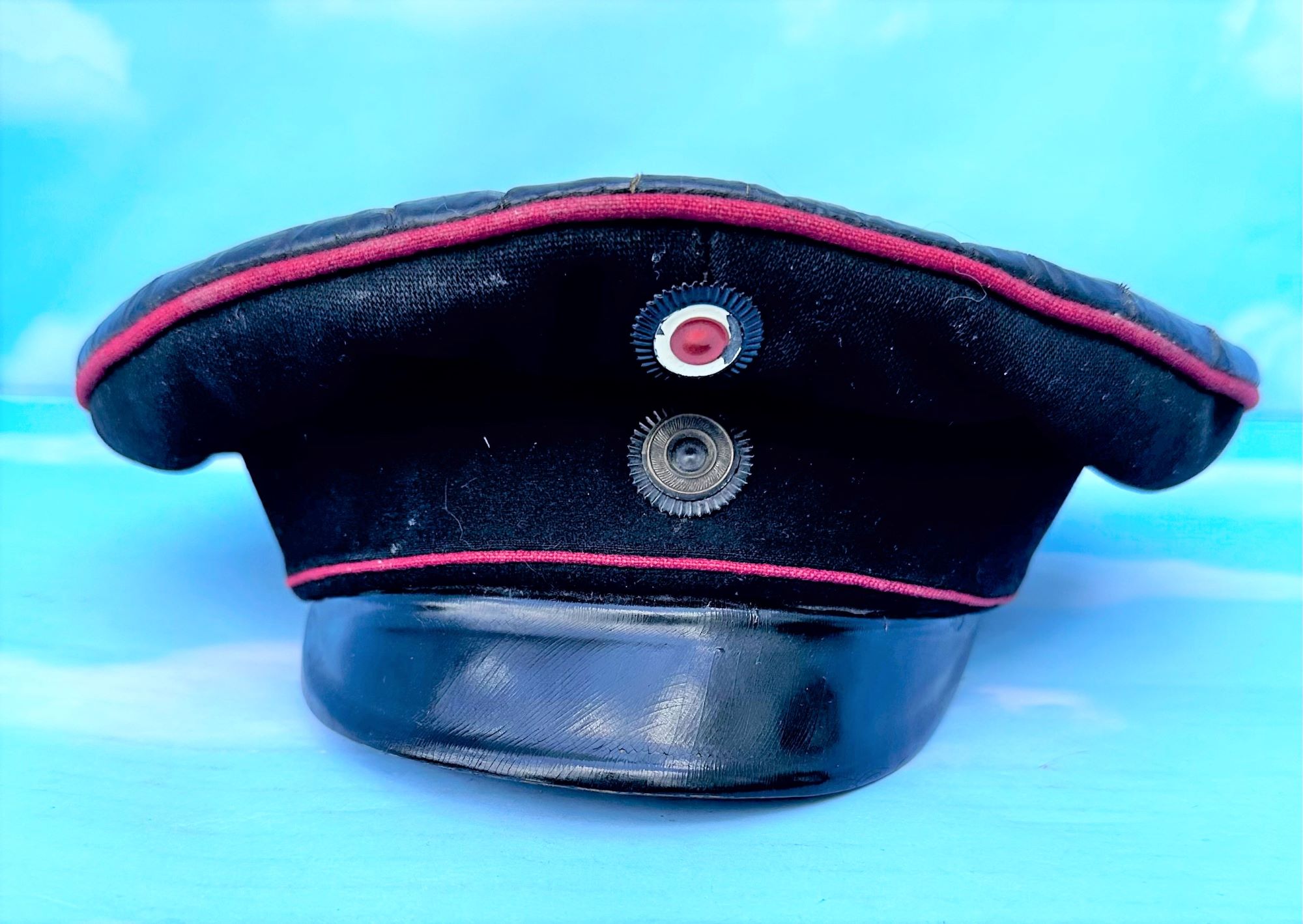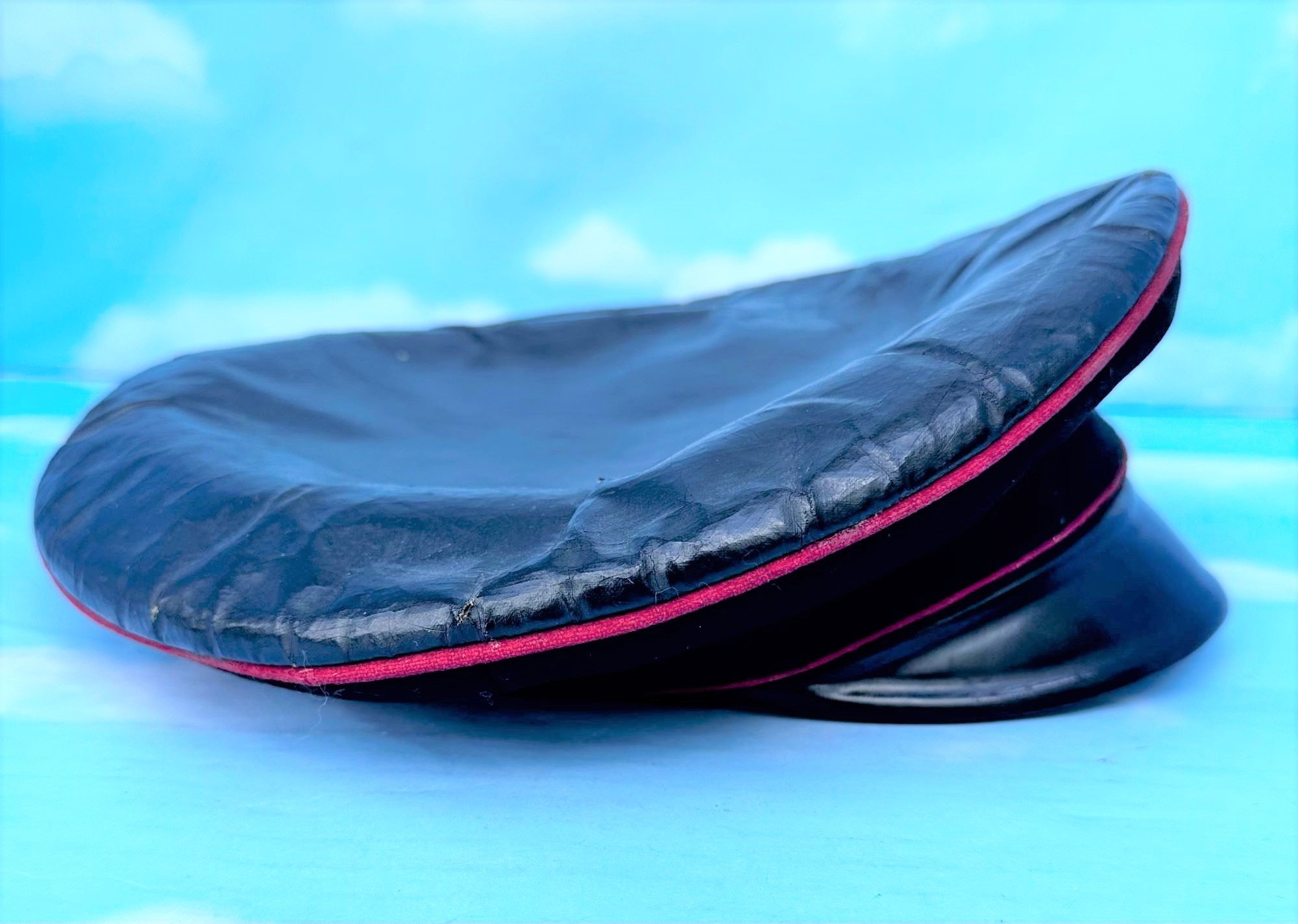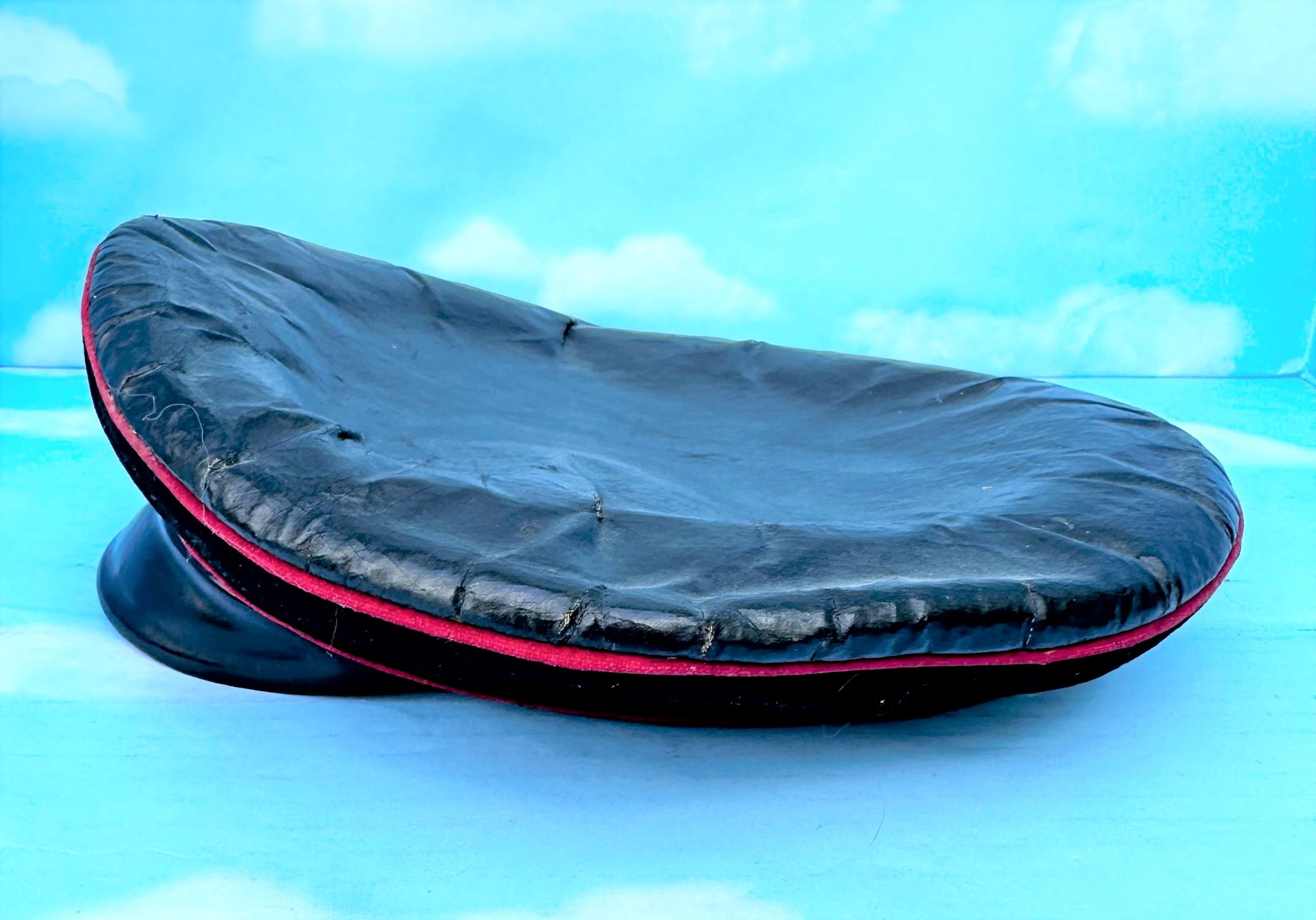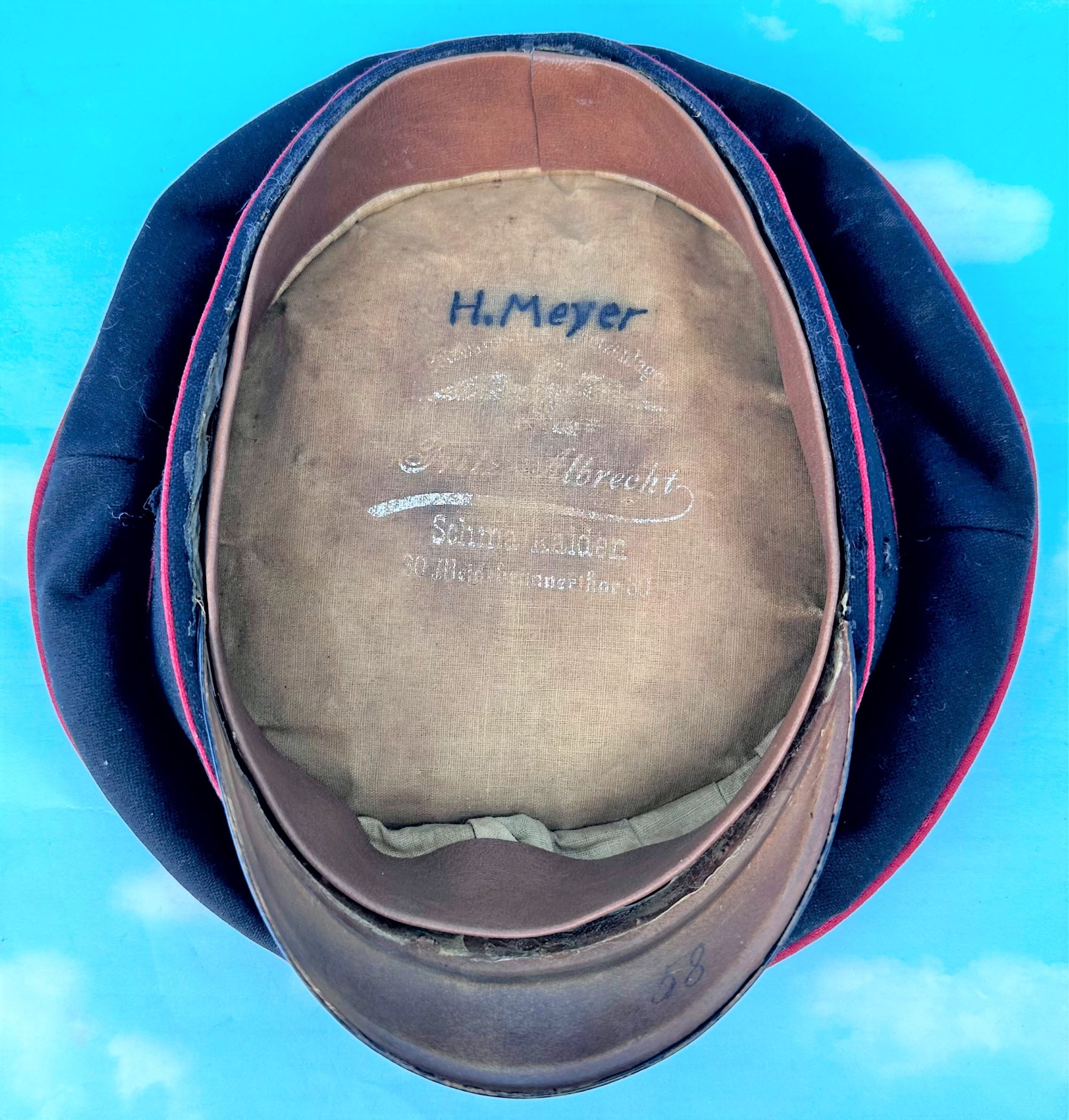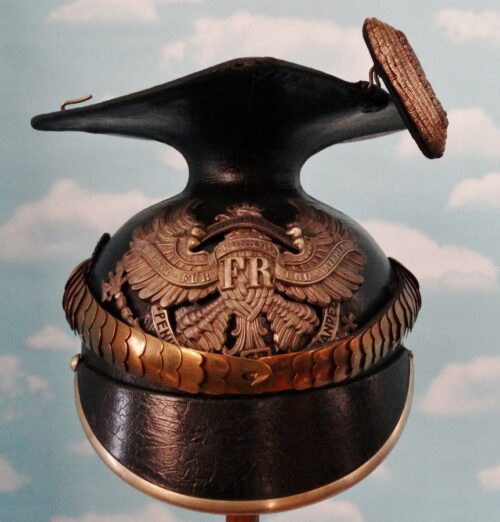Description
This officer schirmütze holds historical significance as it belonged to an officer from a Kraftfahr Abteilung, a specialized unit within the Prussian military during World War I. Kraftfahr Abteilungs were formed in response to the French army’s innovative use of taxis and personal automobiles during the Battle of Marne in 1914. These units played a crucial role in motorized transportation, although their capabilities were limited by factors such as weight capacity and fuel availability.
The schirmütze itself features a unique design. Its color is predominantly black, accentuated by three narrow red trim bands. However, what sets this cap apart is its leather top. While the reason for the leather top is speculative, it is believed that it served to protect the wearer from damp and cold wool while operating in the field. The leather top of this cap is in remarkable condition and adds to its distinctiveness.
This officer schirmütze includes a quality black visor and bears the twin kokarden of Prussia and the Reich. It is worth noting that the presence of both the enlisted man or NCO reich kokarde and the officer state kokarde on this cap creates some confusion. The cap features a complete brown leather sweatband in excellent condition, providing comfort and durability. The silk liner is also well-preserved and contains silver imprints indicating the cap’s manufacturer. Additionally, the name “H. Meyer” is heavily penned in black ink, possibly denoting the original owner of the cap.
Overall, this schirmütze is in impressive condition, with only three relatively small moth nips located on the wide black band. It serves as a tangible piece of history, representing the role of motorized transport units and their unique challenges during World War I. Don’t miss the opportunity to own this exceptional officer schirmütze from the Kraftfahr Abteilungs of Prussia.
Kraftfahr Abteilung, also known as Motor Transport Detachment, was a specialized unit within the German military during World War I. These units were formed in response to the innovative use of motor vehicles in warfare, particularly demonstrated by the French army during the Battle of Marne in 1914. The successful transportation of approximately 10,000 soldiers to the front lines using commandeered taxis and personal automobiles from Paris caught the attention of the German military.
The primary role of Kraftfahr Abteilungen was to provide motorized transportation for various military purposes. They were responsible for transporting personnel, equipment, and supplies to and from the front lines. However, the use of motor vehicles was limited by several factors. Firstly, the weight capacity of cars and trucks was not sufficient to transport heavy loads, so the transport of artillery and other heavy equipment still relied on horse-drawn wagons. Additionally, the availability of fuel was limited, as Germany did not have access to large quantities of fuel during the war. Most of the available fuel was allocated to the Navy for U-Boots (submarines) and the Air Service for aircraft operations.
Due to these limitations, Kraftfahr units were relatively small in comparison to the overall size of the German army. They played a crucial but specialized role in facilitating transportation, particularly in situations where motorized vehicles offered advantages over traditional horse-drawn methods. These units were constantly evolving and adapting to the changing needs and circumstances of the war, and their specific roles varied depending on the context of the conflict.
Overall, Kraftfahr Abteilung units represented the early adoption and integration of motorized transport into military operations during World War I. Their establishment marked a significant shift in warfare, as motor vehicles began to play a more prominent role in transportation logistics on the battlefield.
